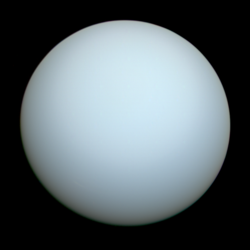





List of largest optical telescopes in Ireland and the United Kingdom is a list of the largest optical telescopes in the British Isles, including in the United Kingdom and Ireland.
Contents
The most famous telescopes include Herschel's reflector, with which he discovered Georgium Sidus (the planet Uranus), and the Leviathan of Parsonstown which at 72 inches (1.83 metres) was for decades the largest aperture telescope in the world. In the 20th century many older telescopes are popular tourist attractions, such as at the Royal Observatory in Greenwich, London. There are also a number of modest instruments at universities used for various astronomical projects or education.
The largest optical telescope in Britain was the Isaac Newton Telescope, which had a 98-inch (2.5 m) mirror; it was located at the Royal Greenwich Observatory, Herstmonceux from 1965 to 1980, but was then relocated to Roque de los Muchachos Observatory on La Palma, Canary Islands.
The list is not representative of the largest telescopes operated by the United Kingdom or Ireland, which by the 20th century were building large telescopes overseas or in the southern hemisphere for better weather or other reasons.